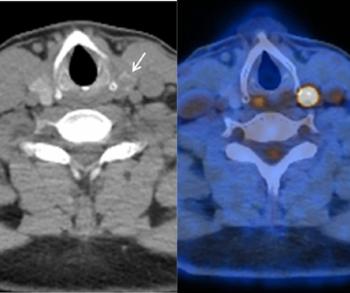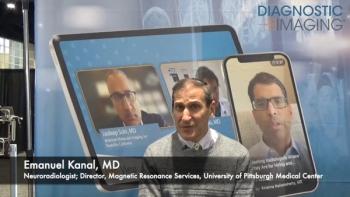
MRI Features Help Detect Neoadjuvant Therapy Response in Esophageal SCC
Multiparametric MRI can detect pathologic complete response after neoadjuvant therapy in patients with esophageal squamous cell carcinoma.
In patients with esophageal squamous cell carcinoma (SCC), multiparametric magnetic resonance (MR) features provide useful diagnostic information of pathologic complete response after neoadjuvant therapy. This is according to a study presented at the
“Multiparametic MR features provide useful diagnostic information of pathologic complete response among patients with esophageal SCC who undergo neoadjuvant therapy,” the authors wrote.
The results were presented by Jinrong Qu, M.D., of the department of radiology, affiliated cancer hospital of Zhengzhou University and Henan Cancer Hospital in Zhengzhou, China.
A review and meta-analysis
The latest study presented by Dr. Qu included 36 patients with esophageal SCC at stage cT2-T4a/N0-N3/M0 who were retrospectively reviewed. MRI was performed before and after neoadjuvant therapy, followed by surgical resection. The lesions were analyzed for the following five MR features: changes of size, signal on DWI, apparent diffusion coefficient (ADC) map, T2-weighted turbo spin echo (TSE) BLADE and degree of enhancement. Response was assessed by using tumor regression grade (TRG).
The five MR features after neoadjuvant therapy showed strong positive correlations with TRG 0 (r = 0.7432; P <.001). The 10 cases with TRG 0 showed either complete disappearance of the mass or decreased mass with minimal residual thickening of the esophageal wall. These TRG 0 cases also showed iso- or decreased-intensity on DWI, iso- or increased-intensity on ADC map, iso- or decreased-intensity on T2-weighted TSE BLADE, or homogeneous enhancement on high-resolution delayed StarVIBE. The five MR features were different from all the TRG 2-3 in 20 cases.
ADC map had the highest performance in distinguishing TRG 0 from non-TRG 0 with the sensitivity of 96.1%, specificity of 76.5%, negative predictive value of 74.7% and positive predictive value of 91.6%
“MR assessment of changes in tumor size, signal on DWI, ADC map, T2-weighted TSE BLADE, and enhancement pattern may distinguish between biopsy proven TRG 0 and non-TRG 0 in patients with esophageal SCC,” the authors wrote.
For more coverage of RSNA 2021,
Newsletter
Stay at the forefront of radiology with the Diagnostic Imaging newsletter, delivering the latest news, clinical insights, and imaging advancements for today’s radiologists.



























